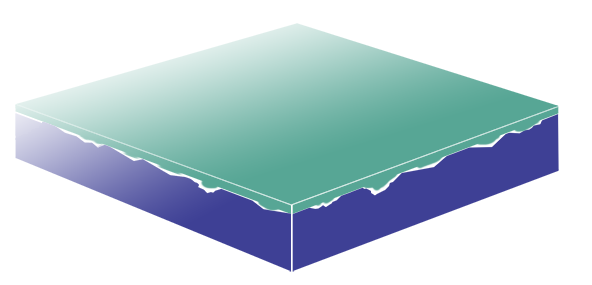Adhesion Fundamentals
Different adhesives are used for different purposes. Selecting the proper adhesive requires the consideration of several important factors; adhesion values, surface contact, substrates, environmental conditions, and performance requirements. The purpose here is to cover some of the principles of adhesion. Surface contact is fundamental to adhesive performance.
To maximize adhesive contact on a surface:
• Substrate must be unified, dry, and free of contaminates.
• Firm pressure must be applied to increase the flow and contact of the adhesive with the substrate.
• Time and temperature will increase the surface contact and adhesion values.
Surface Energy
Adhesion is the molecular force of attraction between unlike materials. The strength of attraction is determined by the surface energy of the material. The higher the surface energy, the greater the molecular attraction. The lower the surface energy, the weaker the attractive forces.
Greater molecular attraction results in increased contact between an adhesive and substrate. In other words, on a high surface energy material, the adhesive can flow (or "wet-out") to assure a stronger bond.
Consider an automobile that has not been waxed for a long time. When water contacts the surface it spreads in large puddles. The unwaxed car surface exhibits high surface energy - the molecular attraction allows the water to flow. In comparison, water beads up into small spheres on a freshly waxed car. It is an example of low surface energy - the liquid (or adhesive) does not flow out.
Substrates
Surface roughness or smoothness, coated or uncoated, flexibility, and part size must all be considered. Foam tapes can achieve more surface contact than thin tapes on rougher surfaces. If the surface is coated, the coating's surface energy must be considered. Smaller, more flexible parts can be bonded with thinner products such as double coated adhesives. Larger, more rigid parts require thicker products such as foam tapes (HATS adhesive).
Environmental Conditions
The types of exposure the bonds will be required to resist must be taken into consideration. These include temperature extremes, sunlight (UV), water, oils or solvents.







